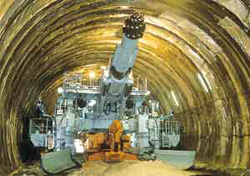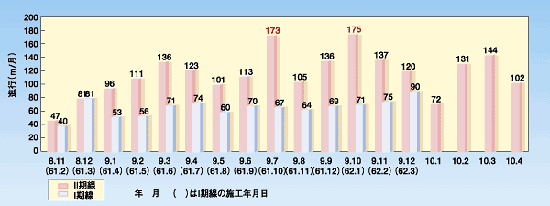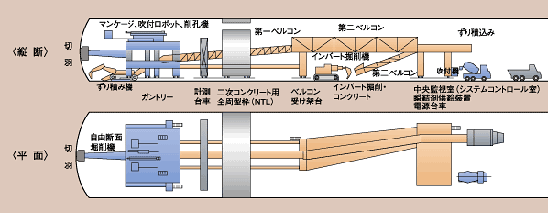Rapid construction of tunnel by TWS
- Corporate Top
- Business guide
- Glossary and data
- Glossary of technology and equipment
- Rapid construction of tunnel by TWS
In the case of Standard tunnel construction, it is a repetition of each independent work process such as drilling / blasting (or excavation), cutting out, steel arch support construction, shot concrete construction, rock bolt placement. Since the construction machines for each of these operations are independent, simultaneous work was not possible in the limited space within the tunnel due to problems such as workability and safety of the machine layout and arrangement, and the work environment. For this reason, the construction machinery was replaced for each work process, which was a constraint for improving the excavation speed. Recently, there are many cases in which a gantry (carriage) is equipped with a boring machine, a spraying machine, and an erector for supporting work to increase the excavation speed by reducing the aforementioned work loss.
At NEXCO EAST, in response to these construction examples, aiming for more efficient tunnel excavation, a multifunctional full-section excavator (TWS) of mechanical excavation type equipped with NTL (entire circumferential formwork for concrete) etc. ) Was developed, and the test construction was carried out in the stage II construction of the Hokuriku Expressway Sanno Tunnel for the mudstone tunnel. With this construction, we were able to achieve rapid construction at a speed that was approximately twice as fast as construction on the Stage I line.
In the future, based on the evaluation of the test construction results, we will study and develop a versatile TWS and Large applicable tunnels.


Excavation history of TWS (Sannomaru)

Excavation history of TWS (Sannomaru)
